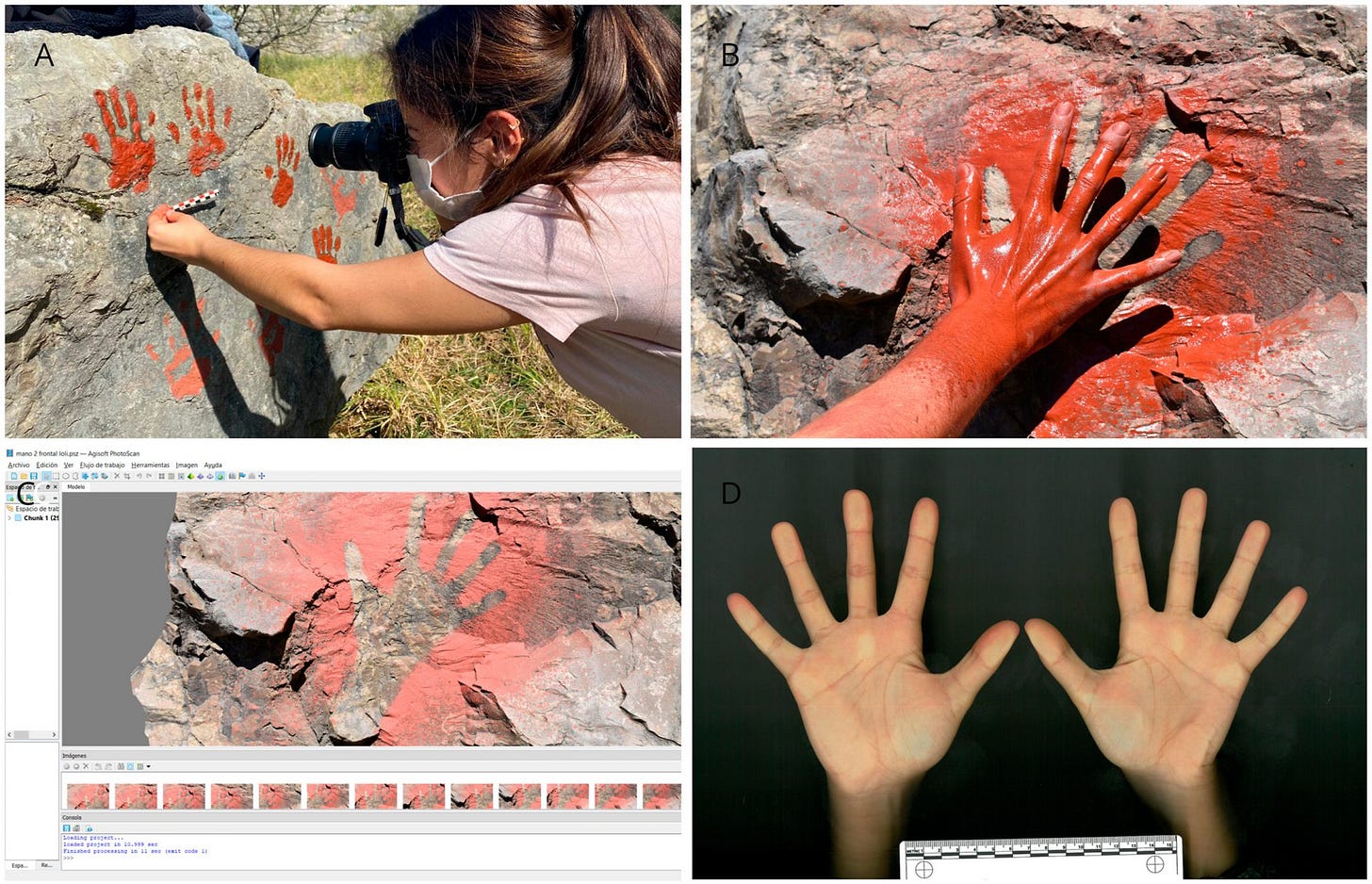Many Ancient Artists of Prehistoric Paintings Were Kids
The painted hand-prints are thought to have coded signals, according to researchers.
A new study1 challenges our perception of how art was created during the Paleolithic period by suggesting that some of the world's oldest pieces of art may have been created by toddlers or even young children. The research suggests that prehistoric rock painting was not a male-only pastime but rather a family-centered collective activity.
Keep reading with a 7-day free trial
Subscribe to Anthropology.net to keep reading this post and get 7 days of free access to the full post archives.

